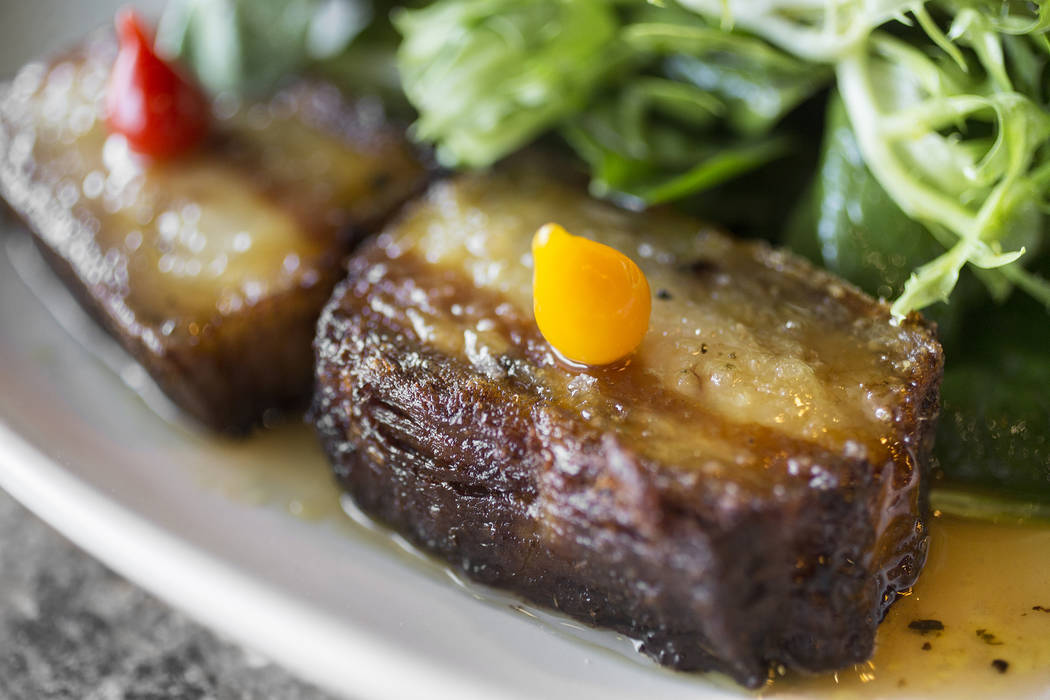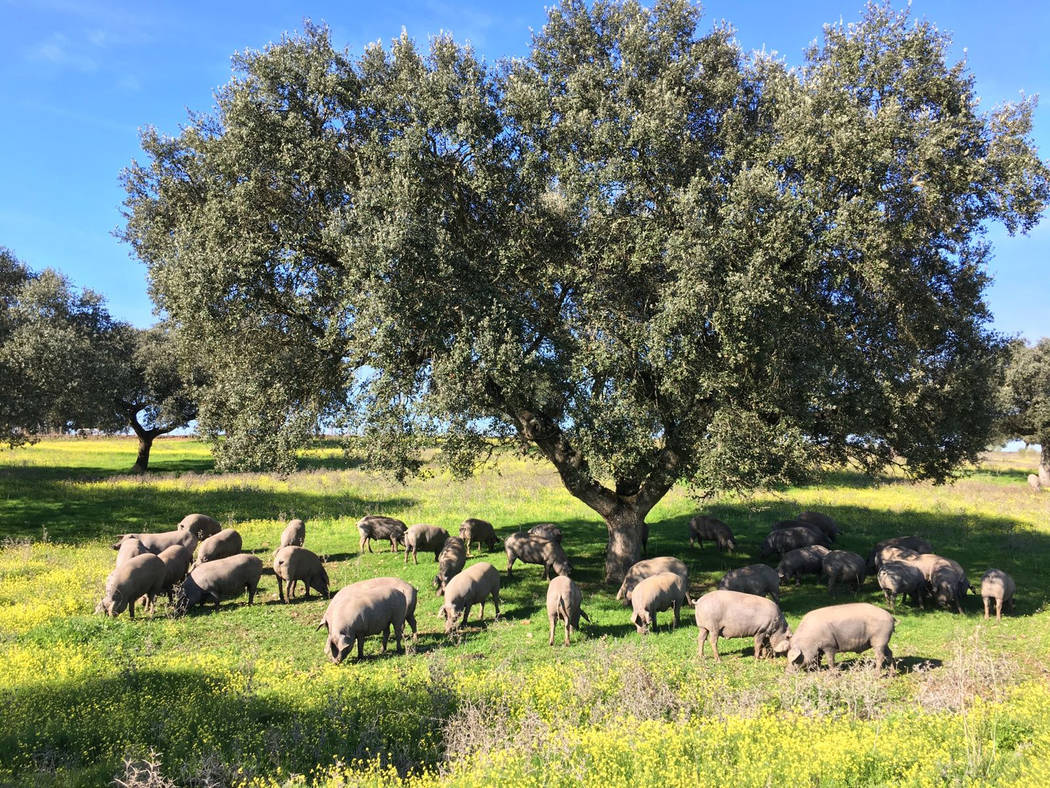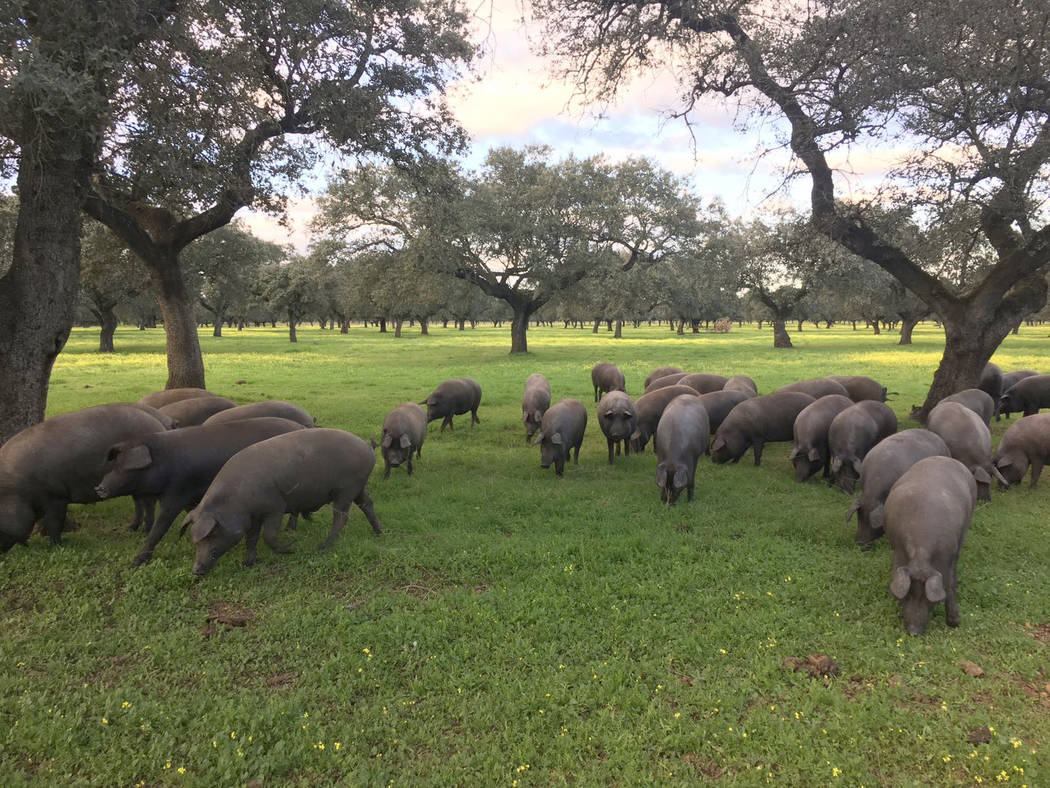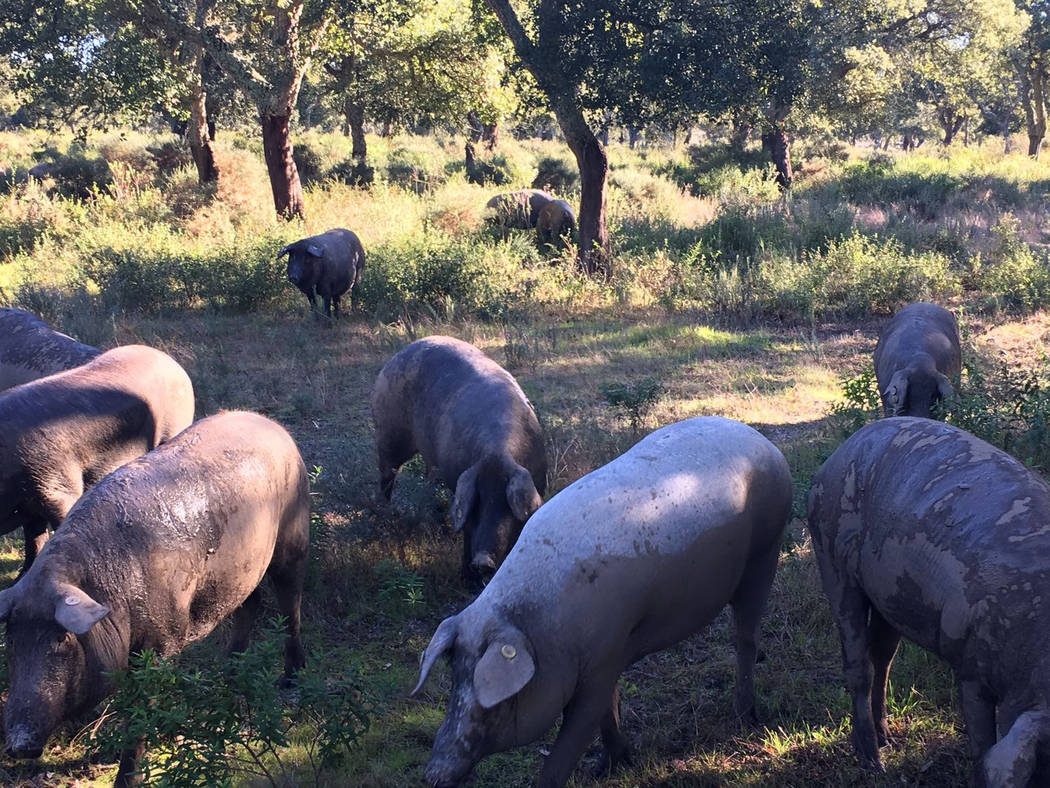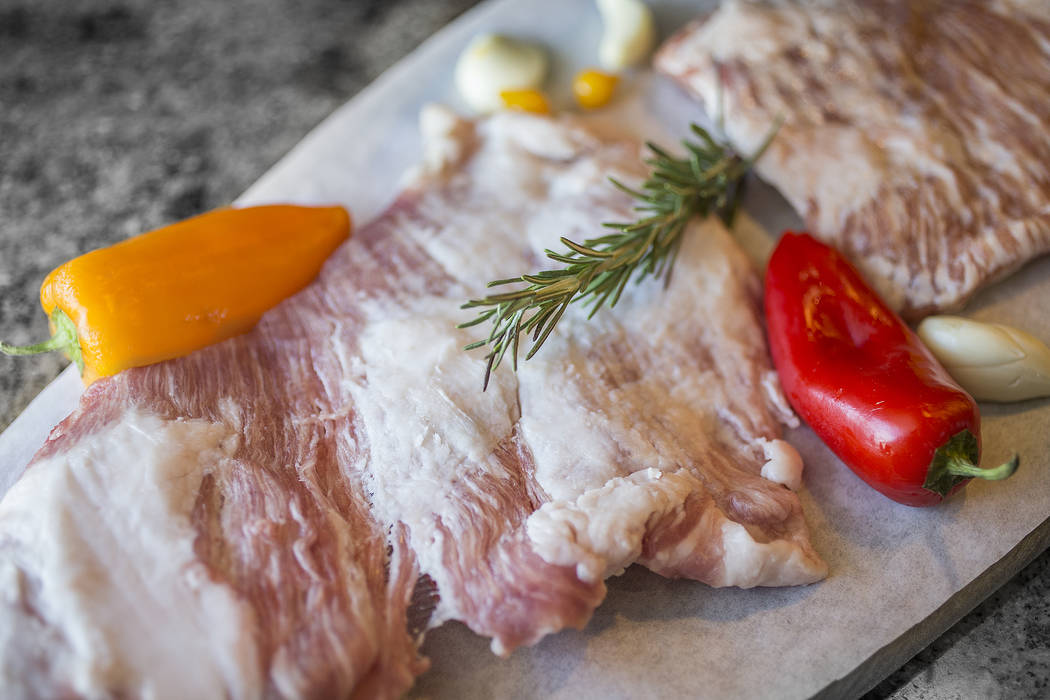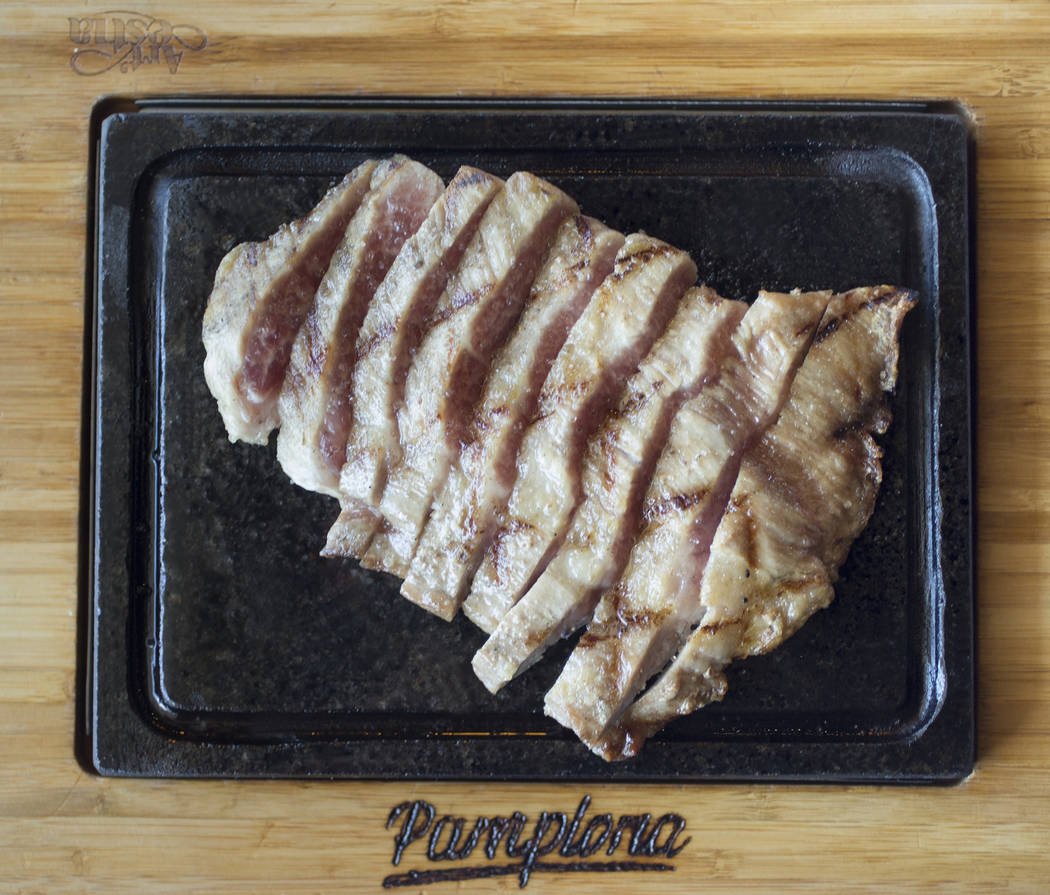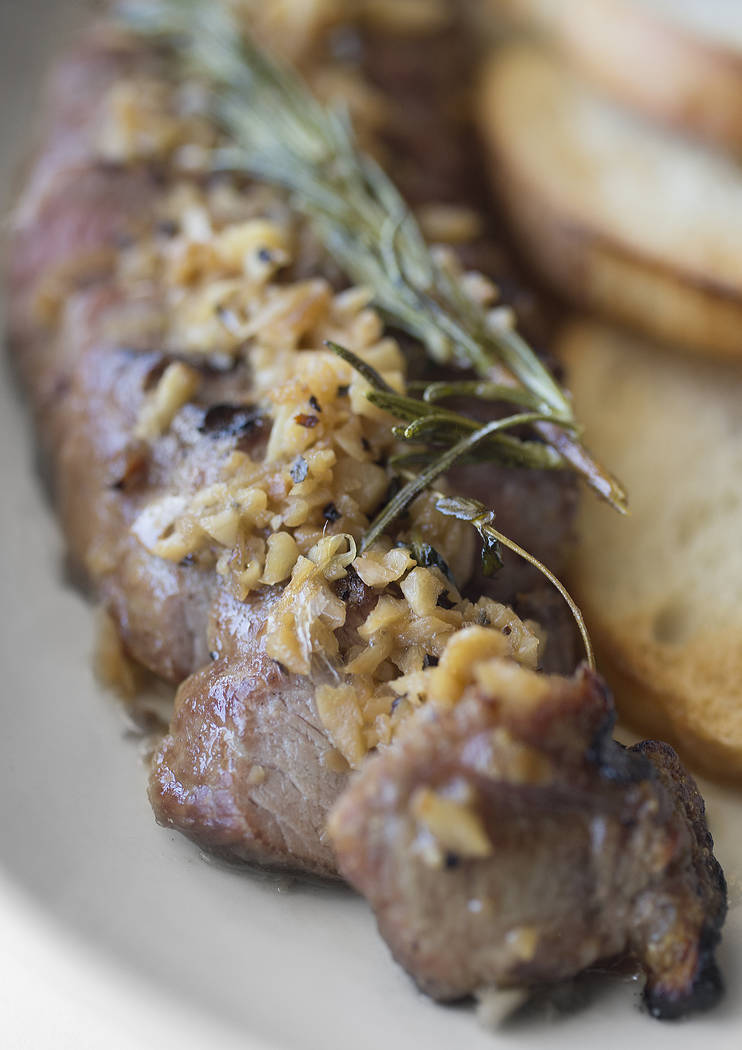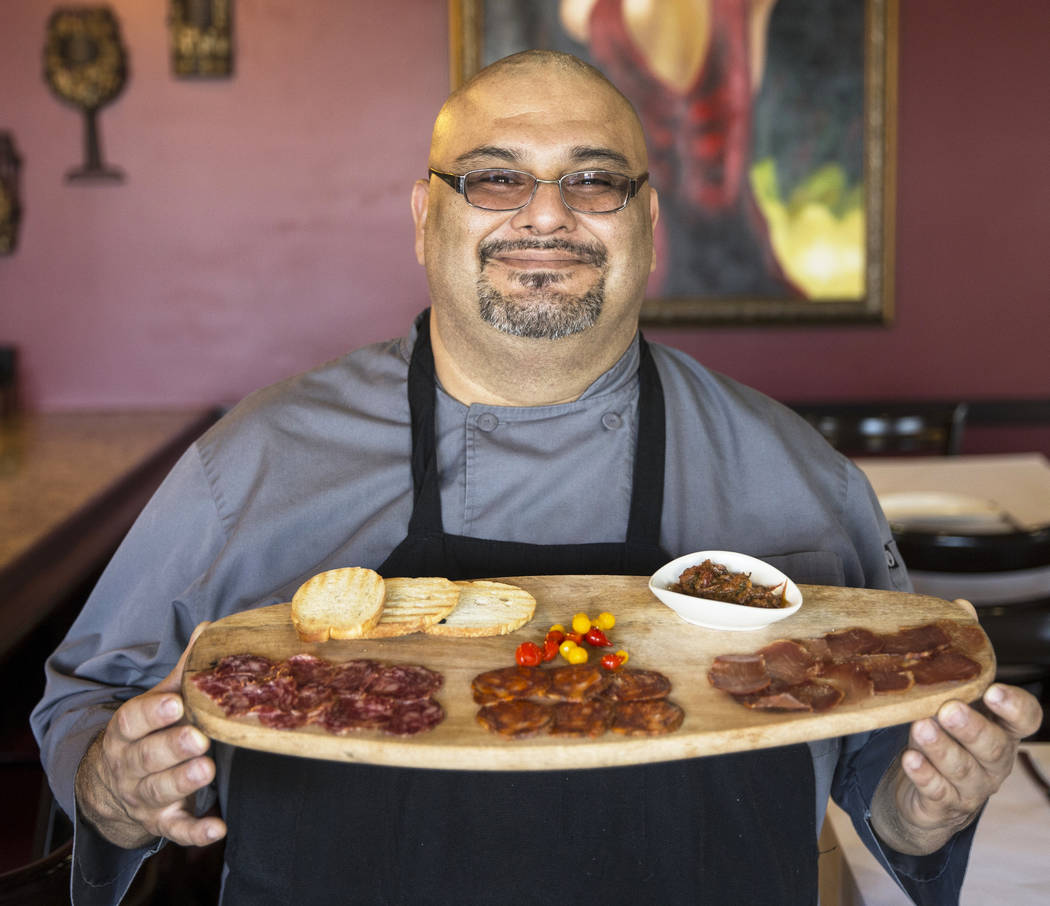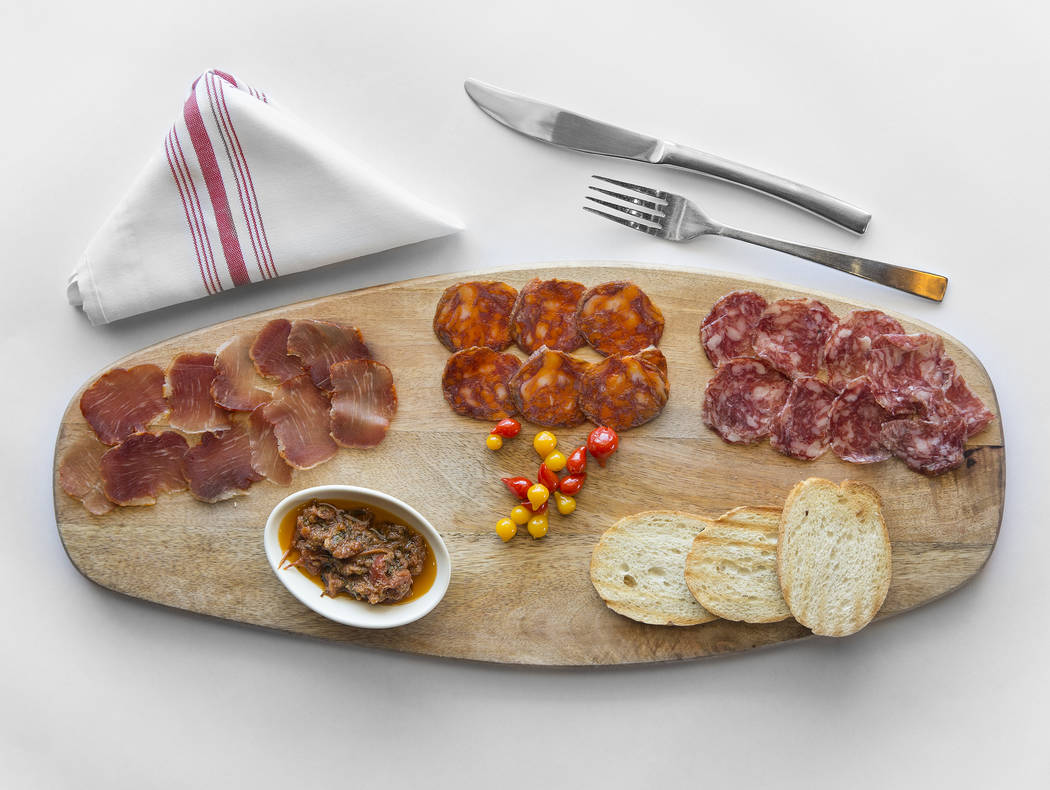Spain’s prized Iberico pork gains popularity in Las Vegas
You may have seen it in a high-end restaurant: the large cured shoulder of a prized pig known as pata negra, after its iconic black hoof. Perhaps you’ve witnessed a certified cortador, or some other cutter of ham, carve paper-thin slices of the fatty bright-red meat, and serve them to you alongside pan con tomate (tomato on bread). If you have tried it, or any other cut of one of Spain’s prized Iberico pigs, you know that this is not the “other white meat” Americans know as pork.
“For me, it was life-changing,” Jaleo chef Luis Montesinos says of his first taste of Iberico. “I had never experienced that flavor in pork before. There was this richness, this unctuousness, this buttery-ness, this sweetness to the texture, how it melts in your mouth, and how it continues to coat the inside of your mouth.”
Despite its reputation in Spain and across Europe, Iberico is still relatively new to the U.S. The first hams were legally imported to America only a dozen or so years ago. And it’s just within the past few years that other cuts have begun to gain popularity here. Those who wish to explore this prized pig, however, can find restaurants on and off the Strip offering not only the pata negra ham, but also Iberico charcuterie and more exotic cuts such as pressa, pluma and the highly-coveted secreto. But what, exactly, makes this pig so special?
More fat, not less
In Spain, ham is a staple at parties and special occasions. And unlike America, where pork is bred and promoted as a lean alternative to red meat, the Spaniards celebrate its fat content. The most prized of all is the native Iberico.
“It’s a specific breed of pig that’s only bred in Spain,” says Montesinos, who offers it in many forms at Jose Andres’ Spanish restaurant at The Cosmopolitan of Las Vegas. “When you go to the grocery stores in Spain, they’ll have cerdo Iberico and cerdo blanco. It’s Iberico pig and then just regular white pig. That’s when I started realizing ‘OK, this is a whole different animal that we’re talking about.’ ”
Iberico pigs are distinguished by their dark color, arched back and less pronounced snout. The most prized of this breed, sold as Iberico de bellota, runs free and forages on an exclusive diet of acorns during the last four months of its life. That combination of breeding, exercise and diet imparts it with a natural fat its devotees insist is unlike the fat on any other animal.
“The fat of the pork walks with you,” explains celebrity chef and Spain native Jose Andres. “It doesn’t overwhelm you.”
Coming to America
Andres played a huge role in bringing these pigs to our shores. As recently as 2005, importing pork products from Spain was prohibited because no Spanish producers had been approved by U.S. regulatory agencies. As one of the highest-profile champions of Spanish cuisine in America, Andres found this frustrating.
“There are the times when being a chef from Spain in America (was) not as easy, when you didn’t have the ingredients,” Andres says. “You grow impatient and you start yourself trying to be the one that makes it happen.”
Andres partnered with Spanish producer Fermin, and began lobbying the U.S. to allow the product in. After a series of arduous inspections, Fermin became the first approved producer in 2005, and hams began shipping around 2007.
The rest of the pig
Those hams, however, were just an introduction.
“The Iberico pig has different parts, (and) not all parts are created equal,” Andres explains.
Because of their high fat content, some cuts don’t even appear to be pork.
“Secreto eats like pork,” Montesinos offers. “Presa eats like steak. And pluma is right in between the two. It’s that hybrid of both cuts where you’re like, ‘Oh my God, it’s pork, but it still has that beefy texture to it that we’re not used to, because that’s not how I grew up eating pork.’ ”
Many chefs prefer to serve these cuts rare or medium rare. (Don’t worry, it’s safe.) And while some, such as solomillo (tenderloin), can be highlighted with a sauce (Jaleo often opts for romesco), others are better suited to stand on their own.
“It takes a lot of guts to give you, in a land where everything has to have a sauce, where more cover-up sauce is better, to give a piece of meat that’s only barely touched by salt, nicely kissed by the smoke,” Andres says.
Migrating off-Strip
Nina Manchev began putting Iberico secreto on the specials menu of her Rainbow Boulevard restaurant Forte Tapas eight or nine years ago, but found the neighborhood audience slow to embrace it.
“It was so difficult because a lot of people didn’t understand it,” she says.
Today, those specials are an easier sell, and Forte offers both pre-sliced Iberico de belotta ham and the secreto cuts for grilling in her restaurant’s retail section for home chefs.
At Pamplona Cocktails and Tapas on West Sahara Avenue, chef Ariel Zuniga currently offers three types of Iberico charcuterie as well as presa, secreto and vientre (pork belly). His goal is to expand to a larger Iberico menu that also includes pluma and solomillo.
“I think we still need to educate people about it,” he says of the products.
“We kind of have to tutor some people. And more often than not, the experience that they leave with, they leave wowed, very amazed with the product.”
Contact Al Mancini at amancini @reviewjournal.com. Follow @AlManciniVegas on Twitter.



